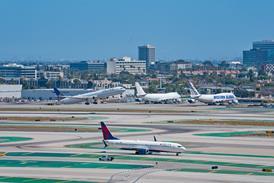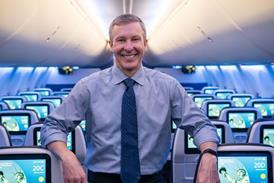Steady growth should indeed be a feature of this year, and for possibly a couple of years to come, according to industry forecasters. In its latest passenger forecasts, the International Air Transport Association (IATA) is more optimistic than it has been for at least a couple of years. This is due to the upturn in economic growth in 1999 and early 2000, particularly in Asian markets, it says. Growth in total scheduled international traffic is predicted to average 5.6% during 2000-2004, up by 0.6 points on the previous five-year forecast.
IATA believes the average annual growth rate for scheduled international passengers over 2005-2014 will be 4.7%. Based on ICAO figures, the number of international passengers is forecast by IATA to reach 1.02 billion by 2014, an increase of 380 million passengers over the period.
The main cloud on the horizon for international traffic, particularly on the North Atlantic, is the expectation of a slowdown in the US economy this year. Elsewhere, various regional factors offer reasons to be optimistic. For example, low-cost carriers in Europe will continue to buoy demand there, while recovery in South America will gather pace following the Brazilian economic crisis. Asia is expected to sustain its return to form, with only a slow recovery in Japan providing any gloom. Chinese airlines, in the throes of a major re-structuring process, will keep growing strongly. Macau, Vietnam and China all feature in IATA's top five high growth countries for the next five years.
Traffic figures from three Asian majors Cathay Pacific, Korean Air and Singapore Airlines testify to the powerful recovery many of the region's carriers have made. For example Cathay carried over a million passengers in December, ending 2000 on a strong note. This increased the total number of passengers it carried during the year to 11.9 million - the highest number in its history.
In Europe modest capacity increases are paying off, says the Association of European Airlines. The annual load factor for its members reached an all-time high of 73.5% last year, some 1.2 points over 1998's previous high of 72.3%.
Source: Airline Business























